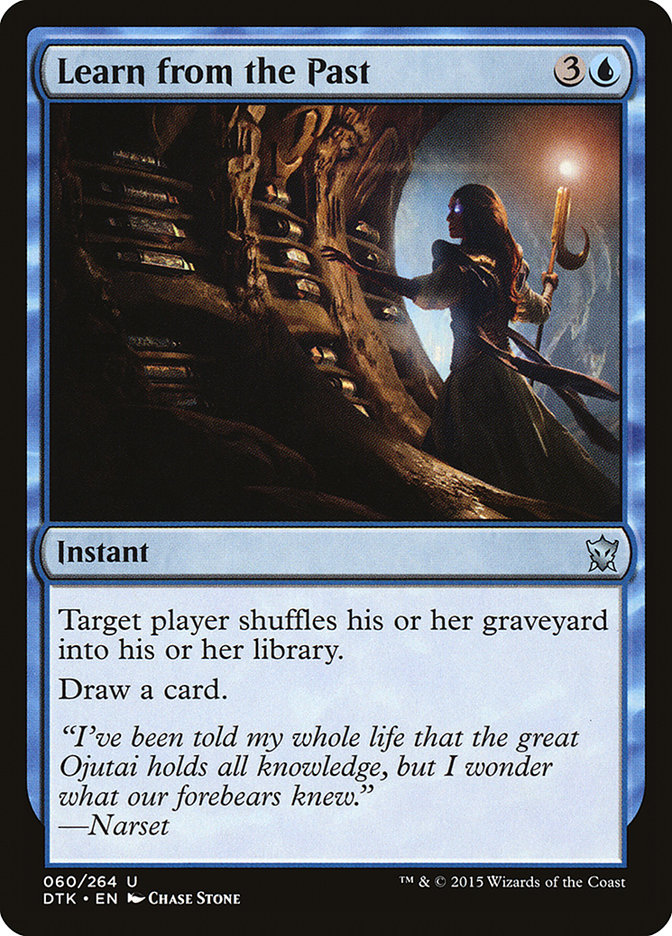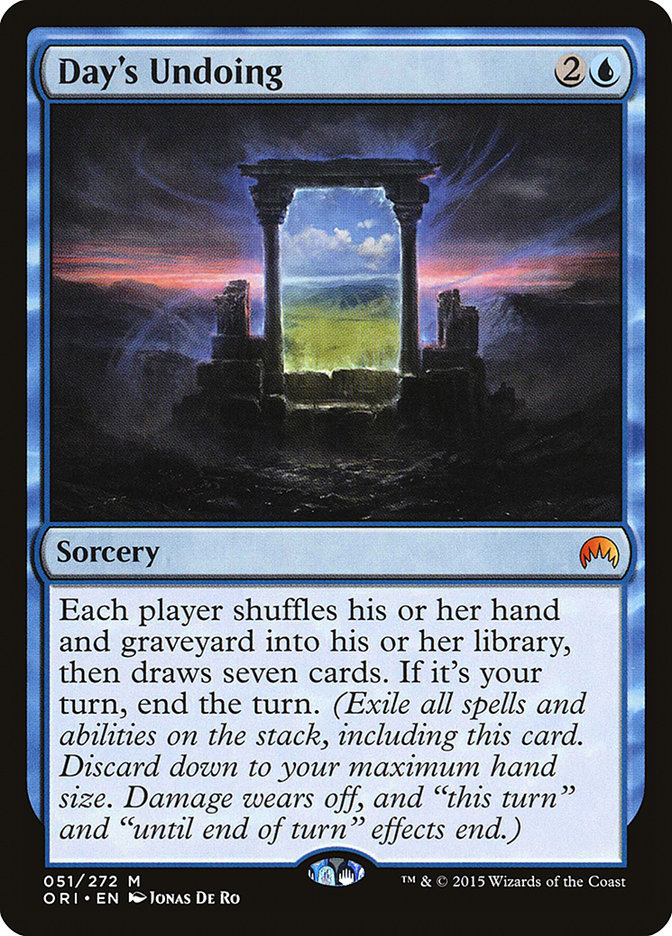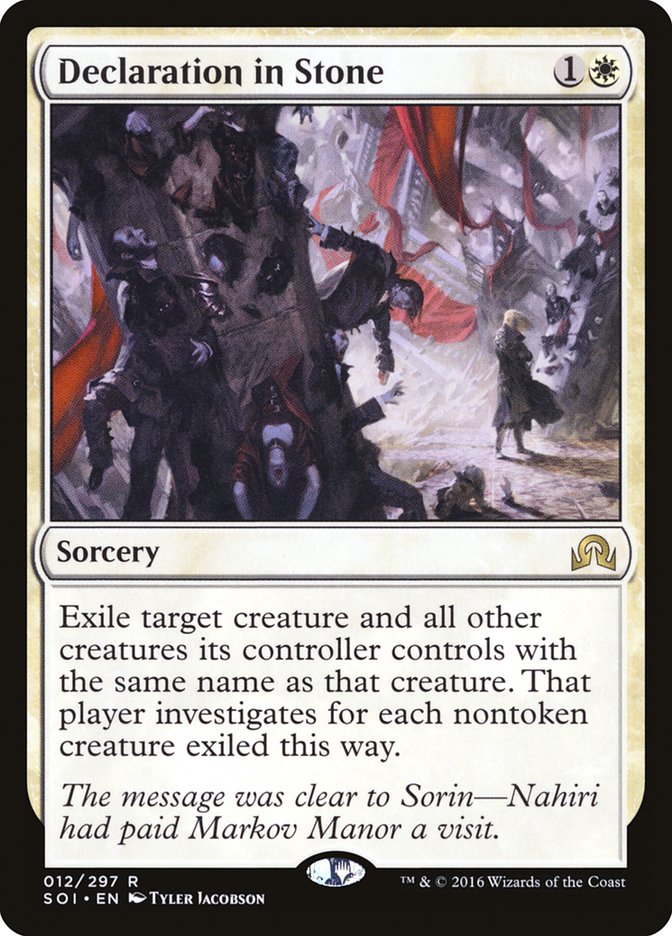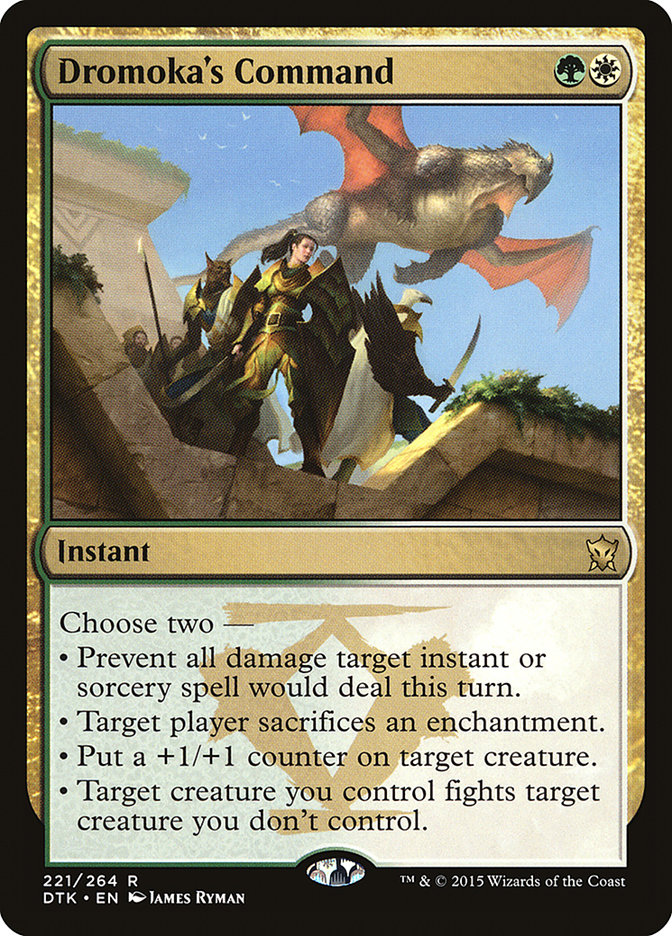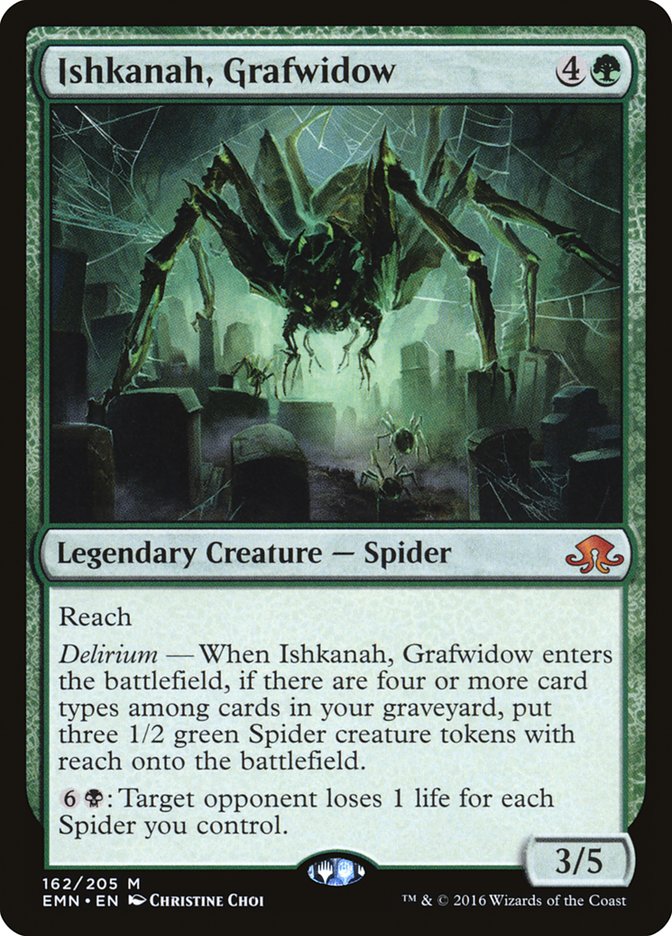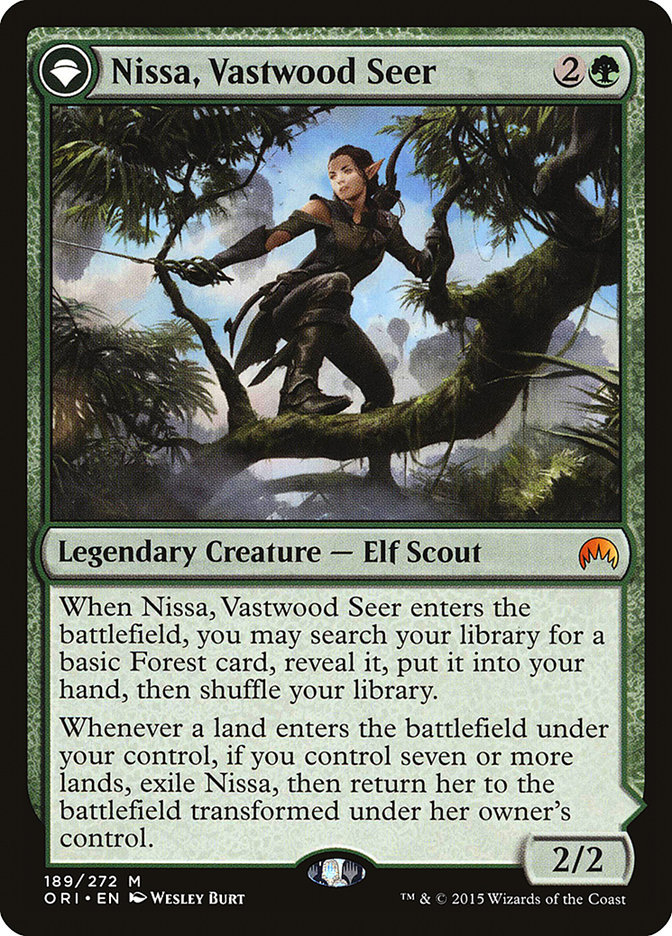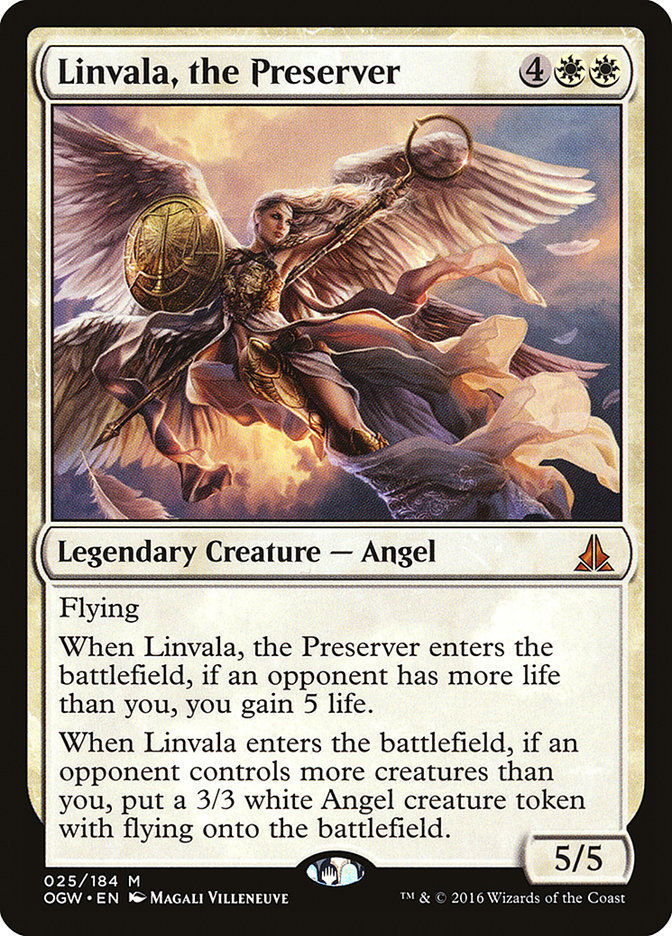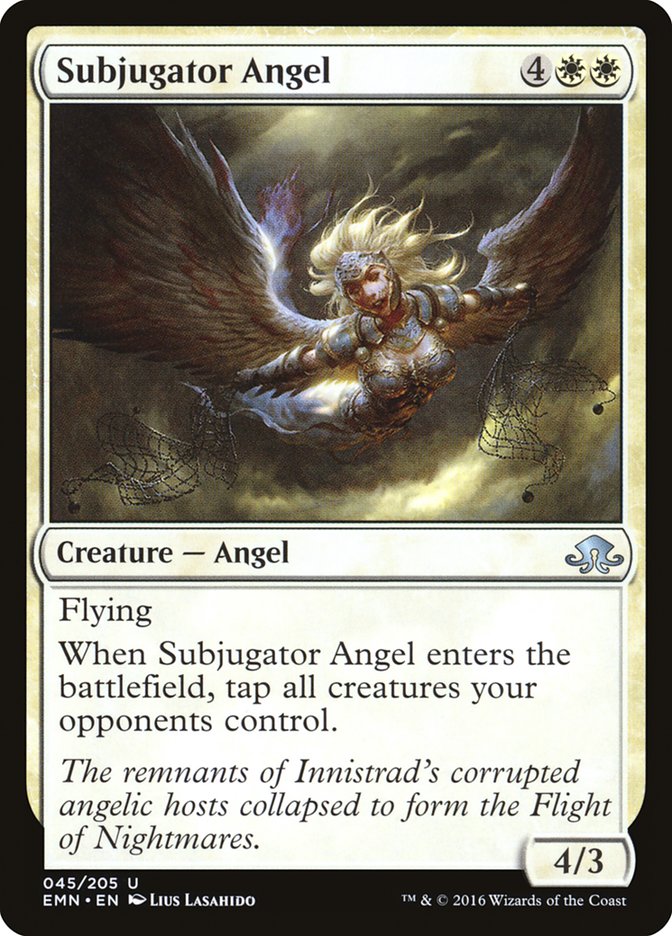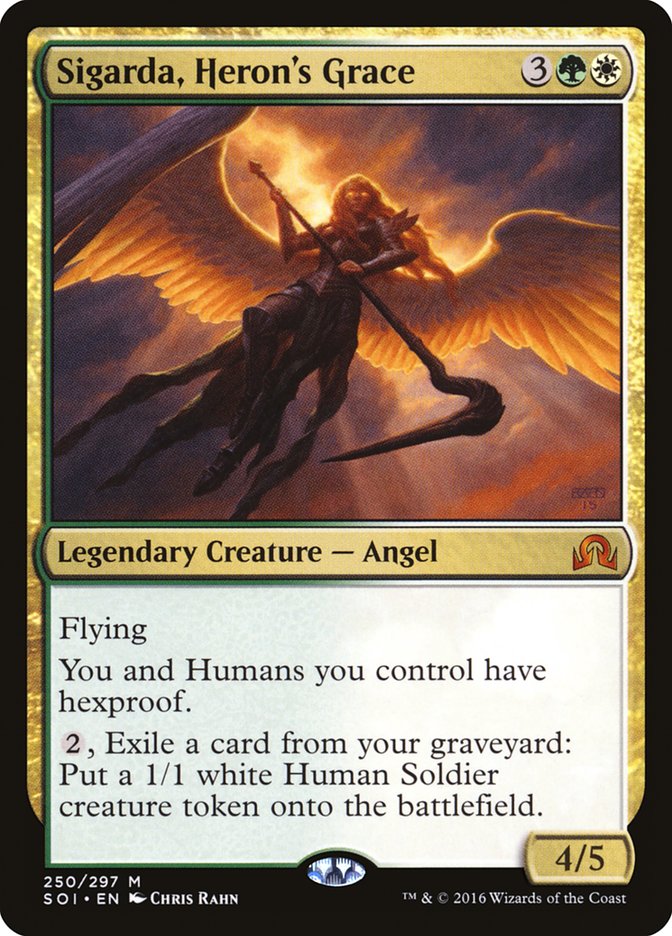Grand Prix Portland was a last-minute decision, but it ended up being a good one. I also registered Collected Company in a tournament for the first time in my life, which was yet another decision that worked out. My good decisions paid off with a twelfth-place finish, although it could have been even better had I not made some bad ones.
Why Bant?
In short, I misread the metagame. Badly.
After Pro Tour Eldritch Moon, I expected people to jump over all the new decks, but that didn’t exactly happen. In fact, Emrakul, the Promised End decks were widely under-represented at the Grand Prix. Meanwhile, at Grand Prix Rimini, their metagame looked rather similar to the Pro Tour, even if the Top 8 was, um, the opposite of diverse.
Thankfully, Bant is basically never a bad choice. Most of its matchups are close, it’s proactive, it plays powerful cards, and it has access to some wonderful sideboard options.
I tried valiantly to get an Emrakul, the Promised End deck to where I wanted it but ultimately ran out of time before I went about fixing the Temur Emerge decks. It didn’t help that occasionally people would cast cards like Learn from the Past or Day’s Undoing against me.
In fact, it made me think that Bant Company with Day’s Undoing would be a good choice against Emrakul. I just needed to prepare for the inevitable mirror matches while also keeping B/G Delirium and B/W Control in mind.
Easy, no?
Creatures (26)
- 4 Jace, Vryn's Prodigy
- 2 Nissa, Vastwood Seer
- 4 Reflector Mage
- 4 Sylvan Advocate
- 4 Tireless Tracker
- 4 Duskwatch Recruiter
- 4 Spell Queller
Lands (15)
Spells (19)

Fun Facts
I ultimated a Tamiyo, Field Researcher and easily lost that game.
I ultimated a Jace, Telepath Unbound (for the millionth time in my life) and won, although the Emblem only played a small role. It forced my opponent to try to kill me as soon as possible, leaving it easy for me to answer to his last-ditch Subjugator Angel alpha strike with a Dromoka’s Command and Collected Company.
I sided in Day’s Undoing against a matchup it wasn’t good against, partly because I didn’t want the tournament to end without me casting it, and partly because I had an audience.
My mana was smooth all day, which was both a blessing and a curse.
What I Got Right
Well, I registered Bant Company in the first place, so that’s a start. Realistically, there were numerous other decks that could have given me a better chance at succeeding, but given how the metagame ended up, Bant was probably the best choice I could have made given the information I had. More on that later.
The biggest departure from the norm is that I was G/U splashing white rather than G/W splashing blue. Selfless Spirit, while potent in the mirror match, is very poor against Liliana, the Last Hope. Instead, I moved toward Jace, Vryn’s Prodigy as a nod to the mirror. I also wanted to play Elder Deep-Fiend and couldn’t do that with five or six Plains. I ended up cutting the Elder Deep-Fiends, which was likely a mistake, but I stand by my choice of two-drop.
The move toward Declaration in Stone was a smart one, albeit a bit risky. Dromoka’s Command is great against creature decks, but outside of the mirror, there aren’t many of those. Yes, you can keep an emerge deck off of their eight-drop for a bit by using Dromoka’s Command to remove their Pilgrim’s Eye or Primal Druid, but is that really a winning line?
Instead, I wanted some Declaration in Stones to handle Kalitas, Traitor of Ghet and Ishkanah, Grafwidow a little better. Dromoka’s Command did not seem well-positioned, so I hedged with a 2/2 split. In hindsight, I would have cut the Dromoka’s Commands entirely. There were some concerns over Fevered Visions, but I think that matchup is probably fine regardless.
I knew that I could end up dying in a sea of W/R Humans and U/R Fevered Visions, but I took the risk. There are few times where I’ll go too deep, but I was pretty sure I was right about Dromoka’s Command. Sometimes those bold metagame choices don’t pay off, sometimes they’re great, and sometimes I don’t take them far enough. For example, take a look at Paul Rietzl’s list:
Creatures (29)
- 2 Nissa, Vastwood Seer
- 4 Reflector Mage
- 4 Sylvan Advocate
- 2 Archangel Avacyn
- 4 Tireless Tracker
- 4 Duskwatch Recruiter
- 1 Thalia, Heretic Cathar
- 4 Spell Queller
- 4 Selfless Spirit
Lands (16)
Spells (15)

I wish I’d played something of a mashup between mine and Paul’s decks. My three losses all came at the hands of black decks, and I was definitely not as prepared as I would have liked to have been. Mostly, though, I liked my list.
The big deal was that I figured out what I wanted to be doing in the Bant Company mirror.
The Secret to Beating the Bant Company Mirror
Be flexible, but treat it like a G/W Tokens mirror. There are times when you have an opening to take an aggressive line and have it pay off. Most of the time, you should be accumulating resources and preparing to play a long game.
It’s not that riding a tempo advantage is a bad idea in the mirror, but it typically ends with your opponent stabilizing at a low life total. If you don’t have any way to capitalize on that, it won’t matter, so I prefer to play a slower game. The games are fast-paced, and if you don’t keep up with your opponent, you will lose.
Jace and Nissa are both key to victory, as is Tireless Tracker, who is an honorary planeswalker. If you only had a few copies of those cards, your opponent could potentially destroy them all. Since I have a higher density than most Bant Company decks, I have a higher shot to eventually stick one and ride it to victory. It’s not uncommon to build towards ultimates if the battlefield is stalled.
In post-sideboard games, watch out for Subjugator Angel or similar parity breakers. Keep a Collected Company and/or Dromoka’s Command handy if possible.
What I Got Wrong
I played a lot of Dromoka’s Commands and rounded my sideboard out with useless Gnarlwood Dryads. Overall, it wasn’t the worst decision, but I didn’t end up playing against W/R Humans.
Jace, Vryn’s Prodigy was a card I felt heavy on at times. Still, it was the correct threat against Bant Company and the various black-based decks, so I’ll likely stick with four. Also, there isn’t another two-drop I want to play.
The mana was too smooth. Yes, that can be a bad thing sometimes. The utility from Lumbering Falls would have been nice against black decks, both to pressure planeswalkers and to get in those last few points of damage. Going forward, I’m going to try them, even if they make for some awkward draws.
Linvala, the Preserver was the wrong level to fight the mirror on. Subjugator Angel kind of goes over the top of it, even if it does exactly what I’m trying to do, which is stabilize the skies and accumulate loyalty on my planeswalkers. I’ve had bad experiences with Tragic Arrogance, but it’s probably something I’ll revisit.
Sigarda, Host of Herons was blank cardboard. Granted, I didn’t use her very effectively, but it was never difficult for my opponent to pick her off with a Ruinous Path or Languish plus Liliana, the Last Hope combo.
As I mentioned earlier, Emrakul, the Promised End was widely underrepresented. If you told me I was going to play against Bant Company four times (4-0), black decks seven times (4-3), and G/U Crush once (1-0), I’m not sure what deck I would have played.
The Gathering
Predicting metagames has always been rather difficult for me. It might not appear that way, since my reputation is roughly that of someone who tunes their deck week to week, but I mostly hedge. Making hard reads is bold and typically doesn’t pay off. Even if you think you can predict what people are going to play, you’re never going to get it exactly right. I had a nice conversation about this with Korey McDuffie.
The gist is that there are too many variables. Magic is huge now, and people are entering into our community from increasingly diverse backgrounds, especially for how they think about, play, and consume gaming and its culture. The largest demographic at a Magic tournament used to be “Magic players,” but now I think it might be just be “gamers.”
If you played other games before Magic, you likely think about gaming and approach it differently from someone who has a pure Magic mindset.
Additionally, people consume information from all sorts of different places. Where there used to just be articles and a handful of respectable professionals who wrote articles, now there are more pros, semi-pros, and others who provide content on a daily basis. Streams, articles, and videos can be found on a multitude of websites. While I used to look at every Magic website, I literally can’t do that anymore because there isn’t enough time in the day.
There are also teams, groups, message boards, and even people just chatting as they play together online. I’m never going to have access to that content.
Before, I had a firm grasp on the information people had access to. Now, I’m only privy to a tiny share. The hive mind still exists as a whole, but the details have too many variables. Basically, there’s no way of knowing whether your tournament will look like Grand Prix Portland or Grand Prix Rimini. All you can do is make your best guess and not slant your deck or deck choice too much in any direction.
My New Technology
Creatures (27)
- 4 Jace, Vryn's Prodigy
- 2 Nissa, Vastwood Seer
- 4 Reflector Mage
- 4 Sylvan Advocate
- 4 Tireless Tracker
- 4 Duskwatch Recruiter
- 2 Elder Deep-Fiend
- 3 Spell Queller
Lands (16)
Spells (17)

This is what I’m leaning toward for this weekend (although I might get tricked into playing a Michael Majors brew). As always, everything is a work in progress, and this is an attempt to fix the problems I had last weekend.
I’m rectifying the lack of Elder Deep-Fiends. They are an exciting re-trump to Subjugator Angel, don’t get hit by Languish or Kozilek’s Return, and provide a huge tempo boost against black decks. If you see me with more copies in my sideboard, don’t be surprised.
Most of this tuning is an attempt at finding a better sideboarding strategy against black decks. I’m likely not there yet, but having more cards that are good in those matchups will surely help.
I kinda want to try a couple Explosive Vegetations in the sideboard, but people I respect keep calling me stupid. There were several games where I was up on cards against the black decks, but was choked on mana, and having the quick ramp spell would probably do wonders. It is one of those plans that sounds good in theory but is probably not great in practice.
As I move more toward this version of the deck, I’m tempted to cut Spell Queller entirely and possibly move the deck more toward value town and away from raw power by adding things like Primal Druid and Evolutionary Leap.
It’s likely a silly idea.
Obligatory Sideboarding Guide with Light Commentary
B/G Delirium
To some degree, these decks are similar to Bant Company.
Both decks use green’s best creatures to hold the ground, create card advantage, and eventually overwhelm their opponents. Instead of Bant Company’s Reflector Mages, B/G has spot removal.
Cards like Kalitas, Traitor of Ghet; Liliana, the last Hope; and Emrakul, the Promised End allow them to go over the top. You have to walk a narrow line of dodging their sweepers and trying to set up planeswalkers while also trying to get them dead before their big spells come online.
Considerations to Sideboard In
Considerations to Sideboard Out
They aren’t heavy enough on graveyard elements to warrant bringing in Day’s Undoing. Negate has a similar issue.
Later in the tournament I figured out that I’m supposed to sideboard out a single Sylvan Advocate against them. Early on, it gets caught up in Languish, so you don’t even want to cast it early.
I’m at a point where I think it’s correct to sideboard out Collected Company because of how many spells I want against them post-sideboard. I’m not happy about it, especially since many of the cards I’m bringing in happen to work well with Collected Company, but so it goes.
Sideboarding against B/W Control is similar, except you will almost certainly want Negates.
Bant Company
Considerations to Sideboard In
Considerations to Sideboard Out
I’m still unsure on how good Tamiyo, Field Researcher is in the mirror, especially if you’re on the draw, but there are a lot of people who swear by it. I prefer to bring in one on the play hoping to mise it early, but I don’t want to draw multiples.
Tragic Arrogance is a better sideboard hedge than Gnarlwood Dryad, even if it’s something I’ll only bring in on the draw in the mirror. Those are the games where you’re slightly behind and it doesn’t look fishy if their battlefield position is much better than yours. They are incentivized to Reflector Mage your best creatures, which will save them from your Tragic Arrogance. Plus, Tragic Arrogance comes online the turn after they cast Collected Company.
The Spell Queller scenarios have always been awkward. Try not to Spell Queller anything too devastating, such as a Reflector Mage, because it will put you too far behind when they eventually find a way to deal with the Spell Queller and free up their spell.
Temur Emerge (Pantheon)
Considerations to Sideboard In
Considerations to Sideboard Out
I’m not sure how much interaction I want here, but I think it’s a decent amount. I wouldn’t be surprised if I found that sideboarding lightly is what’s best in this matchup.
Day’s Undoing is the only card I definitely want to bring in. If you wait until they are setting up for Kozilek’s Return Flashback or Emrakul, the Promised End, your Day’s Undoing will be backbreaking. Since they are so removal-light, they will probably be under pressure and have no way to come back.
W/R Humans
Considerations to Sideboard In
Considerations to Sideboard Out
Pretty straightforward. Lower your curve, interact with them, and take over in the late-game.
***
You don’t have to play my version of Bant Company, but I’ve enjoyed it so far. I have an edge in the mirror and a slight edge against black decks that I’m continually working on.
Not bad for a deck that everyone is trying to beat.


